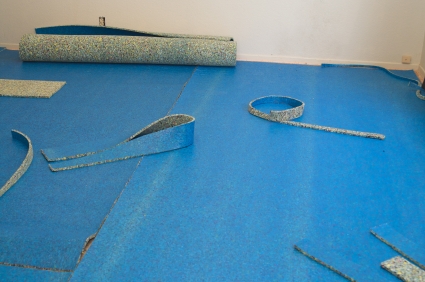Urethane Blog
Recycling Polyurethane Foam and Bonded Carpet Cushion
February 16, 2018
RECYCLING SUCCESS STORY – BONDED CARPET CUSHION

The transformation of flexible polyurethane foam waste materials into a useful consumer product,
rebond carpet cushion, is a major recycling achievement. Flexible polyurethane foam (FPF) waste
is generated from manufacturing trim scrap as a byproduct of the industrial fabrication of products
such as mattresses, upholstered furniture and automotive seating. Post-industrial scrap foam is
generated in the manufacturing process. Additional scrap foam is generated during fabrication as
large foam blocks are cut into the desired shapes for bedding, upholstered furniture or the
automotive industry.
Post-consumer FPF waste scrap comes from end-of-life upholstered furniture, mattresses, carpet
cushion, automotive interior parts and other sources. Recovery of post-consumer foam waste was
historically focused primarily on the recovery of used foam carpet cushion during the installation
of new carpet. Known as ‘take-up,’ the used foam cushion is typically removed by the carpet
installer and taken to a collection point, where scrap gathered from different locations is combined.
In recent years, recycling of mattresses has become more common and a number of states now
have organized programs to collect and recycle used mattresses. This presents an additional source
of foam scrap to be handled.
Finding a home for the large quantity of post-industrial and post-consumer waste generated each
year, and keeping it out of landfills, represents a huge challenge as well as an opportunity. These
scrap streams have been converted into new Bonded Carpet Cushion, known as ‘Rebond’ for many
years. This represents an incredible recycling success story, diverting over ONE BILLION
POUNDS per year of scrap which would be have been destined for landfills around the U.S. This
corresponds to 600 MILLION cubic feet of foam scrap, which would cover over 11,000 football
fields.
Almost 100% of U.S. residential carpet is installed over carpet cushion. There are several varieties
of carpet cushion sold in the United States. These include bonded carpet cushion, fiber pad, latex and synthetic foam rubber, virgin polyurethane foam (known as ‘Prime’), and froth polyurethane
cushion.
Since the introduction of polyurethane foam carpet cushion in the late 1960’s, the market share for
bonded carpet cushion has grown to achieve significant consumer acceptance. Among available
carpet pad options, the largest segment, approximately 85-90% of the market, is represented by
bonded cushion products.
In 2015, approximately 800 million pounds of FPF waste (combined post-industrial and end-of-
life post-consumer scrap) was recovered in the U.S. and an additional 200 million pounds of scrap was imported, primarily from Europe. This volume of collected scrap was mechanically processed
and used as a raw material feedstock in the manufacture of bonded cushion products.
Bonded cushion is manufactured by blending varying portions of recovered post-industrial and
post-consumer scrap. Mechanical processing involves shredding and grinding the scrap into small
chunks, which are then blended together based on a ‘recipe’ for the type of cushion being
manufactured. A polymer binder is added to the blend, and the mixture is bonded and cured under
high-pressure steam into blocks or ‘logs,’ before being sliced or peeled into finished carpet
cushion.
Recycling now provides a market for virtually 100% of all post-industrial scrap generated during
foam production and finished product fabrication, as well as a large share of the post-consumer
scrap sourced from recycled carpet cushion, mattresses, upholstered furniture, among other
sources. Manufacturers benefit from the convenience and economy of foam recycling. Buyers are
easy to locate, and they are looking for scrap sources to meet market demands. Bonded cushion
represents a value-added floor covering component that is important to the economic performance
of the carpet industry and to foam manufacturers. Since the 1960s, the bonded carpet cushion
industry has diverted billions of pounds of foam scrap from landfills.
 Sign Up for Email Updates
Sign Up for Email Updates
 Everchem Updates Archive
Everchem Updates Archive
Recent News
April 24, 2024
April 24, 2024
April 18, 2024
April 18, 2024
April 17, 2024